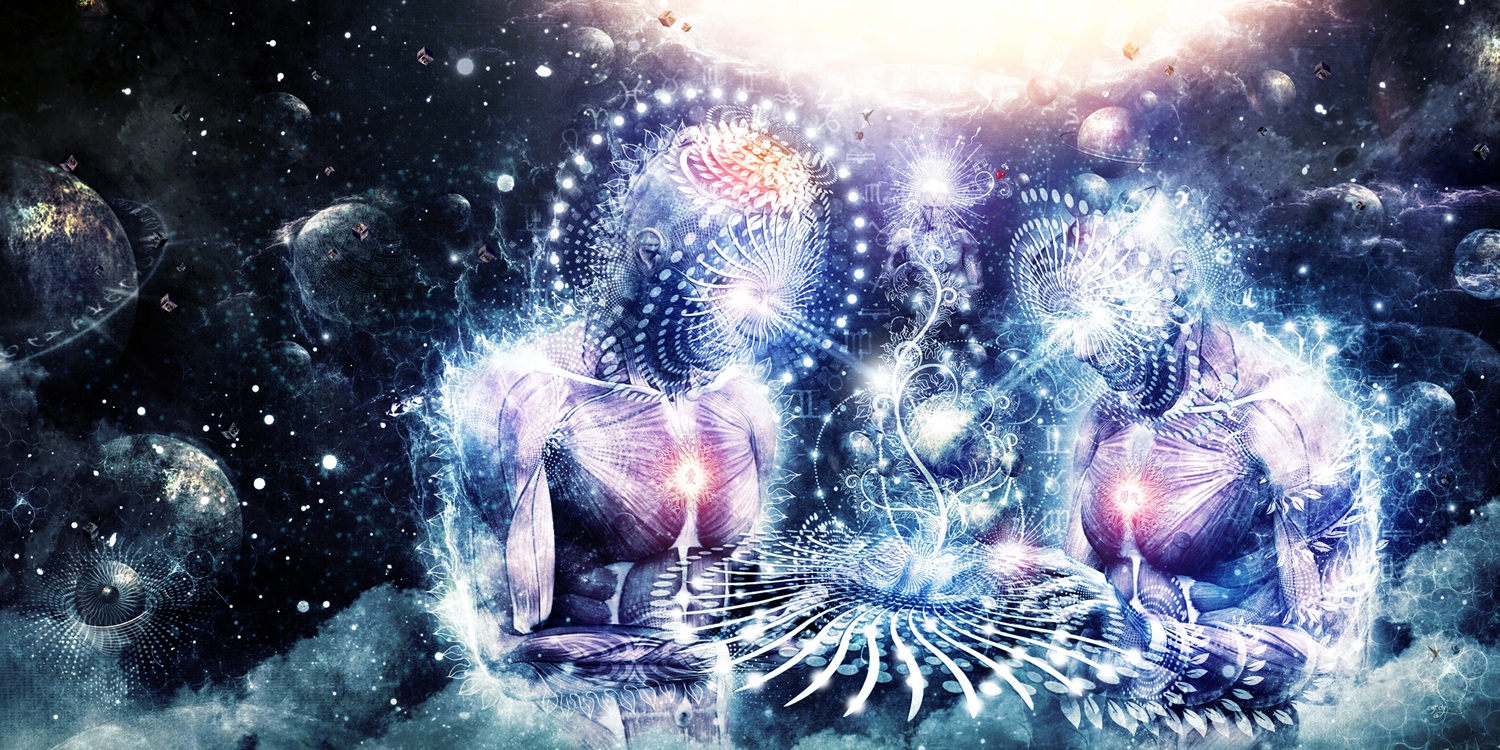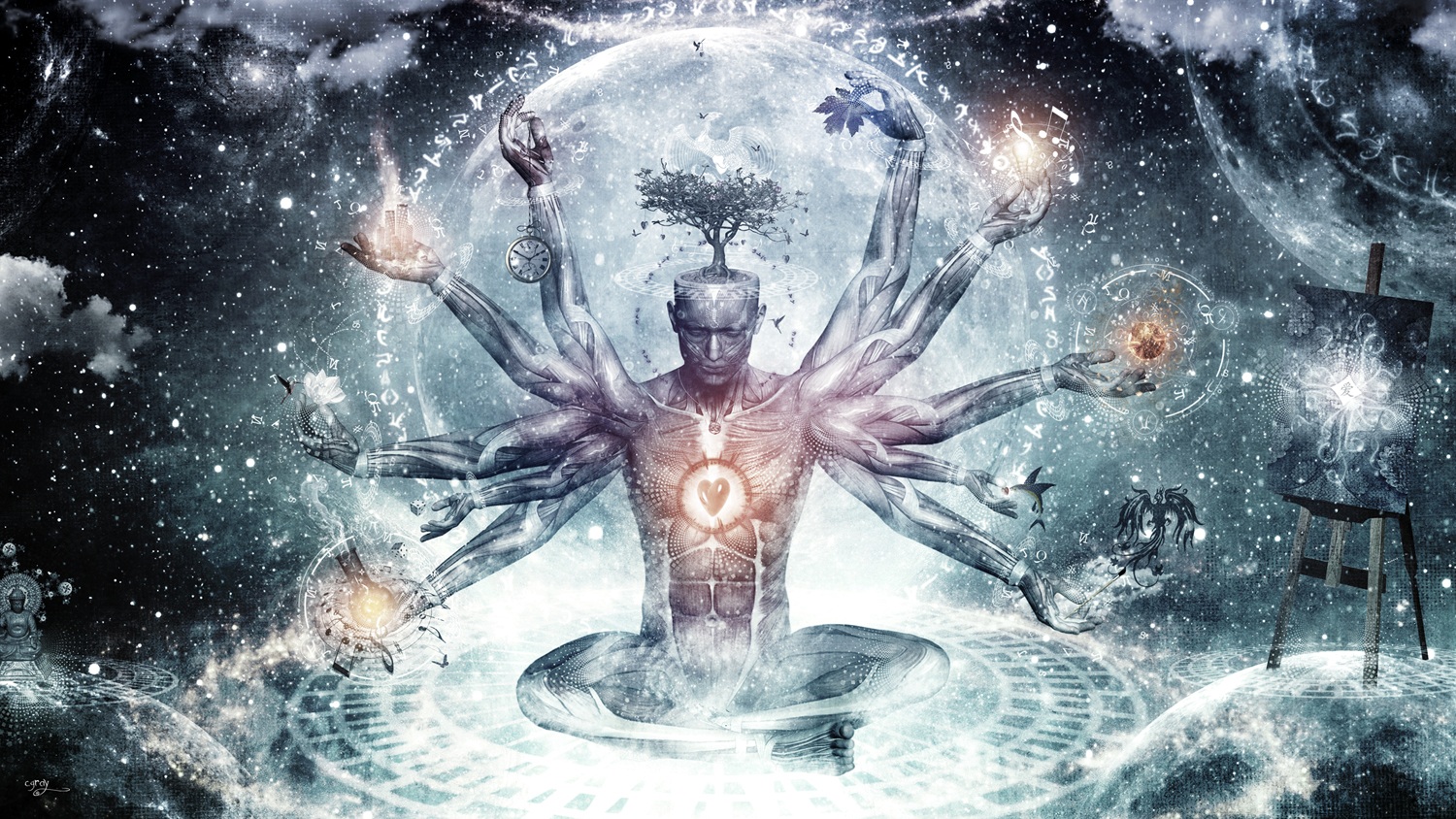Personality, Identity, and Ego – Our Main Tools for Transformation
The personality, identity and ego have a tendency to be used intermittently, and their actual meaning can remain somewhat obscured or vague. This may be due to the fact that they emerge out of each other as a natural growth process of becoming. While our personality is related to our bodily consciousness or subconscious mind, and is developed in a completely unconscious (automatic) and spontaneous way in childhood, our identity naturally begins emerging out of or as an extension of our personality when we move into adolescence, and begin building a relationship with the outside world beyond our close knit family unit, and begin thinking for ourselves. As we begin problem solving and reasoning, and as we begin developing our sense of self by what roles we naturally take on and begin playing in group situations, we begin consciously developing our identity through the choices we make, what we’re willing to experiment with, and by how we feel when having certain kinds of experiences. Though in most spiritual scripture, the term “ego” is the same as “identity”, in our modern usage of the idea, the ego has become associated with forming our identity out of an association to purely material things, and is more accurately referred to as the “false ego” or “alter ego”.
Our personality gives us our basic characteristics and tendencies as natural behaviors and way of being in the general sense. These develop naturally as children based on the relationship we form with everything around us and how we’re stimulated through a cause and effect, action – reaction type of process. Once this initial stage of development has taken place, it sets the basis for the next stage of development to spontaneously emerge and begin taking shape. As we form relationships with other people, activities, ideas, situations, and so on, more of our inner self is brought out and expressed by how we interact, what we say and do, what roles we begin naturally taking on, what parts we begin playing in a larger whole, and how we sense ourselves through our own experiences. Some ways of being we like, and so we develop them by moving deeper into them, others we don’t like, and so quit doing them while trying something else. Our teenage years are about experimenting with our ability to create ourselves, and as we approach and move into our twenties, our basic identity is in place as far as how and where we see ourselves, what roles and situations we naturally gravitate towards, and what relationships we natural form through resonance. As we create our experiences, we identify with them, and they serve to shape us in terms of our being.
This process of identification continues as we move through life, and the ego is naturally formed as an extension of our identity based on how we begin forming our identity around material aspects that we use to form our self image. As we dress a certain way, we feel a certain way, and form it as a part of our personal style. As we drive a certain type of car, we get a sense of ourselves by way of the car as an image we begin forming of ourselves. The house or apartment we live in is related to a certain neighborhood, social and economical status, racial group, etc., and fashions our self-image even further. As we move through life we’re steadily accumulating material possessions and playing certain roles that we continue to identify with and become the basis of who we are as an image we form of ourselves, and we become dependent on them. We enter into various relationships that bring out certain qualities in us, and make us consistently feel a certain way, and we sense ourselves by way of these feelings, and they continue to fashion us.
This aspect of our identity built out of material possessions and our desire to acquire more, or the need to begin exercising control over others through the status we achieve by way of material possessions, forms what is typically referred to as the ego. The ego is a false identity and self-image that produces a false reality that becomes a delusion, because it’s temporary, always subject to changing, and can be taken away or lost, which would cast us head on into a full fledged identity crisis. We wouldn’t know who we are or what to do without them. It would lead us grasping desperately for any form of security we could find. We would be out of our element, in a brand new position and situation with no memory to fall back on, and no longer possess any real form of power and control. When we identify with the material world, we bond ourselves to the material plane, and become “mortal” in nature in the sense that our “self” dies with the body, and our soul seeks life in another body in order to continue living.
In most spiritual traditions the term identity and ego are considered synonymous, and have essentially the same meaning. Our identity is the faculty we use to function and operate in the outside world as the roles we naturally play. It’s only within Christian or religious applications that we find ideas of killing or destroying the ego. In spiritual traditions, every part of the whole is a valuable and necessary part, and plays a key role in the overall development of the soul within the body. Every aspect of being plays a specific role in our whole being. You can’t kill or destroy any one part, without simultaneously destroying or disrupting all parts. The idea around the ego as identification with the body and material world is to transform it. We can transform it through intentional use of our mind and what we choose to identify with. Whatever we identify with we align ourselves with and draw on as our basic source of power – our inner self or true being – or an outer source by identifying with material possessions that we use to create an image of ourselves in place of who we really are. We use this false image to present ourselves as being important and superior somehow, not through our actual character void of material attachments, but by flaunting and over valuing our material wealth.
To transform the ego is to change what we associate and identify with. If we choose instead to identify with our Higher Self, the spiritual world or God, then we move into being one with our true identity that always comes from within and is based solely on who and how we’re being in any moment. It doesn’t rely on attachments to the material world, and is a source of strength that we possess no matter what our outer circumstances are. We begin operating out of our center of being in terms of our true nature, which remains consistent and is available to us all the time, and can never be taken away from us by another, unless of course, we allow them to. By always drawing on our inner source of invisible powers, we become associated with our spiritual essence, and nourish our immortal self, which transcends the death of the body and remains intact in the invisible realms of the spiritual plane.
The secret of our ego / identity is that whatever we associate with, we become like in nature. By associating and identifying with something, we move into it and merge with it, embody the same qualities, and take them on by expressing out of them, creating our experiences of ourselves, and shaping ourselves by way of them. We alter our vibratory frequency by working directly with our identity. Whatever identity we employ and exist out of, determine how we’re being in every moment and what type of story we act to naturally tell. Our identity is our character which forms all of our behavior, and how we enter into relationship with everything else. When we’re getting our identity from outside means, we’re always in the process of trying to control and manipulate them. We form strong attachments to outcomes and how others need to be in order for us to be okay. We’re literally being controlled by the very thing we seek to control. When we shift that mentality, and draw only on an inner source of being, it doesn’t matter what others do, and we have no need to quest after power, because we already possess it.
To identify with our Higher-Self is to focus our attention on states of being as qualities of consciousness. We embody and become those qualities and express through them to create in the world by how we enter into a new kind of relationship with it, and act therefore to directly influence it. Instead of saying that when I dress a certain way I feel confident, you become confident as a way of being regardless of how you’re dressed. You ask yourself, what does it mean to be confident, how would I feel if I was confident, and how would I act? What would my posture be? How would I think and talk? You develop the idea of what you’d have to be and do to appear confident. You then model those behaviors, practicing being that way, which makes you feel that way. If you continue to intentionally model being confident, by pretending to be, it starts becoming natural and not only acts to completely transform how you think and feel, but how you act naturally to influence other people by how it changes your cause and effect relationship as a natural interaction that takes place between you. In this way you cultivate that quality within you and it becomes a natural part of you. As you begin feeling, thinking, and being confident in all areas of your life, it transforms your identity by how you sense yourself and what kind of person you are. Whatever you allow to express through you, you become the same as.
When we develop ourselves by cultivating inner qualities we synthesize them into our being, and they remain a part of our eternal self. The quality of consciousness we possess creates the nature of our experiences which become the memory that makes up our soul. Our soul is built up and developed by the memories it acquires through the experiences of the body. At the death of the body and the material possessions we acquired, only what is an essential part of ourselves are carried forward and maintained. Our sense of self based on our body and our position and possessions, dies with the body. By identifying with the material world, we resonate with it, maintain a strong connection to it, and fail to ascend. Because we bond with our material identity, we continue to reincarnate on the lower planes of the Earth, and fail to utilize the power of our material existence to grow ourselves internally by consciously developing our character to a virtuous state and a higher level of vibration. When we identify with the spiritual plane, we form ourselves to be like it in consciousness, resonate and bond with it, and naturally ascend to it after we shed our material existence.
Spiritual Scientist and Mentor for Spiritual Growth




